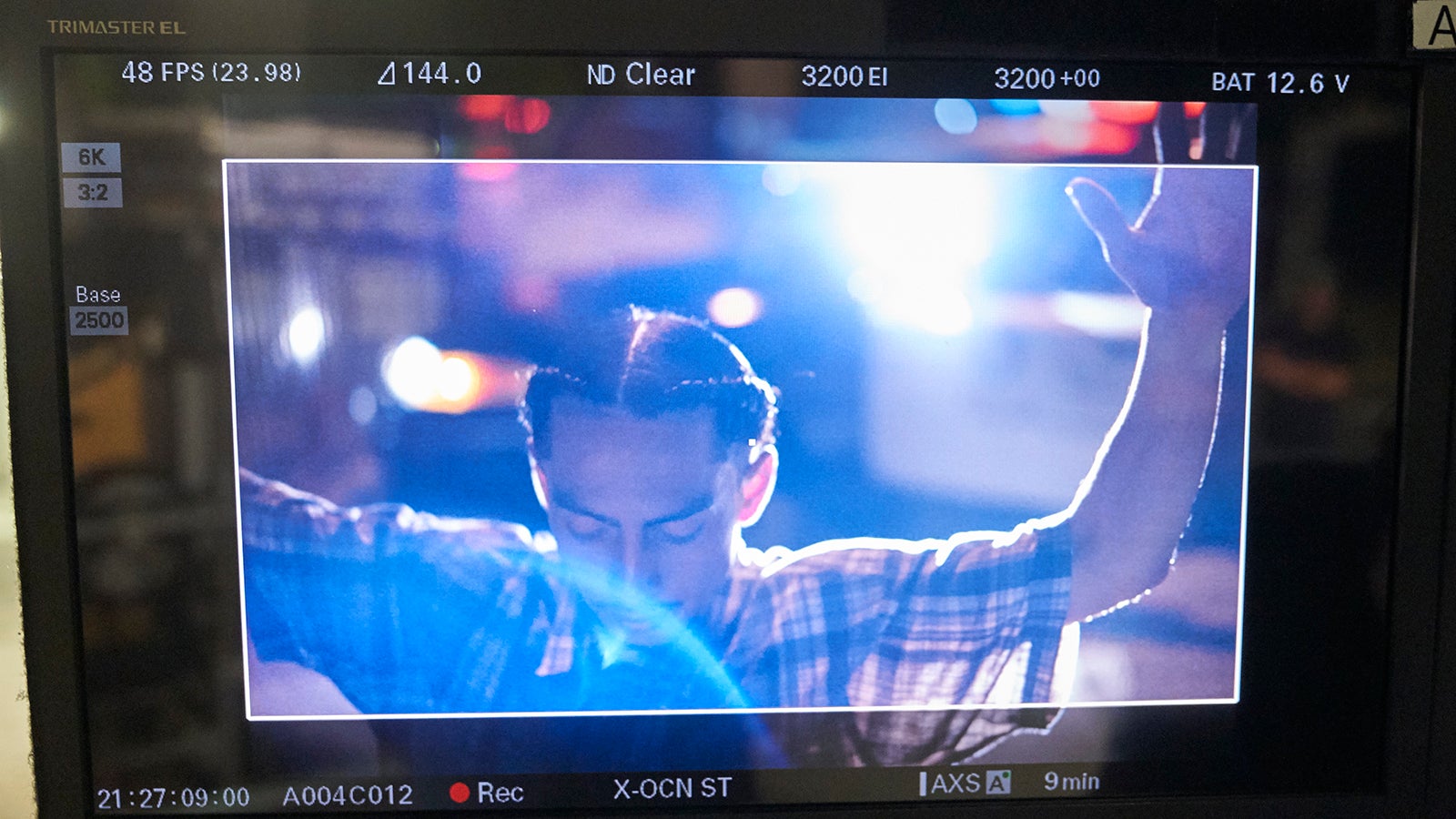
12-09-2019 - Gear, Technology, News
"R&R," New Short Film by Rodrigo Prieto, ASC, AMC, DP of "The Irishman," Shot on VENICE with the New Zeiss Supreme Prime Radiance Full Frame Lenses
By: Jeff Berlin
Snehal Patel of Zeiss weighs in on VENICE and the New Supreme Prime Radiance Lenses. The lenses, based on the popular ZEISS Supreme Prime full frame lenses, offer controlled flares, a warmer overall look, a new T*blue coating, and feature ZEISS eXtended Data metadata technology.
Jeff Berlin - Can you please tell me a bit about how the VENICE was selected for this film?
Snehal Patel - This was actually Rodrigo’s choice. He didn’t even hesitate when we asked which full frame camera he wanted to use for this project. He was keen on the VENICE because of the ease-of-use and color science. Plus he really wanted to put the high ISO through the paces. The resulting image speaks for itself. The colors, saturation and look of the short film are driven in part by the new Sony sensor technology which makes clean, low-light shooting possible. Considering there were a number of night scenes and high-contrast situations – especially since Rodrigo was using direct light sources into the lens to help tell the story – the camera really held up and delivered the kind of picture Rodrigo wanted.
Behind the Scenes Reel of R&R
Behind the Scenes Reel of R&R
JB - Thoughts on shooting Full Frame vs S35?
SP - For this particular project, we were definitely targeting the use of a full frame camera to show the capabilities of the new Supreme Prime Radiance Lenses, which have full frame + coverage (46.3mm image circle projection). Full frame sensors bring a new dimension to high-quality filmmaking. The extra sensor area is like having a larger film format, with tighter grain and higher level of detail. It helps smooth out shapes and allows cinematographers to employ longer focal length lenses than they would normally use for various shots (WS, MS, CU, XCU) thus reducing depth of field and quickly achieving a “cinematic” look. Plus full frame is a great way to enhance intimacy onscreen because you can actually be closer to the action with longer focal length lenses. You no longer have to depend on super wide lenses in the interior of cars for example, which would lead to distorted looking characters and exaggerated lines. Instead, jump to one focal length longer lens, switch to 6K mode on the VENICE and you have a nice wide field of view to capture the action in a much more realistic looking manner.

JB - How well do you feel the VENICE complements Supreme Prime and Supreme Prime Radiance lenses?
SP - The Radiance lenses impart more character to the image than standard Supreme Primes. The VENICE is a good companion to any ZEISS cinema lens because it doesn’t add any characteristics or aberrations of its own to the image. The low-pass filter in front of the sensor is quite clean and neutral. So the image being projected from the back of the lens is faithfully captured by the sensor. This allows the cinematographer to choose a lens that has more character (Supreme Prime Radiance) or one that is more neutral (Supreme Prime) as a starting point. Then they can employ filtration and manipulate the captured image with LUTs to create the exact look they desire. In the past, cinematographers could employ film stock versions and processing as a way to create a signature look, but now with the advent of digital sensors, they rely more on lenses, LUTS and filtration to achieve this goal.





